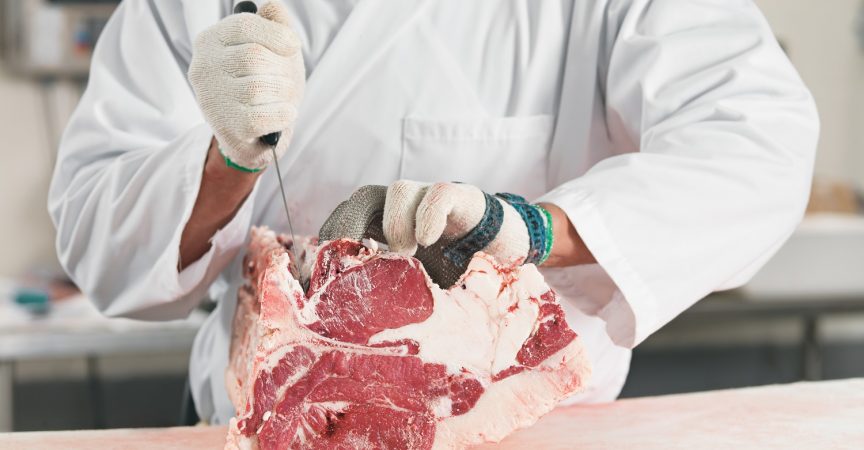Knives Out with Canada Beef & Victorinox
By Chris Szego for Canada Beef and Victorinox
At RC Show 2020, Canada Beef and Victorinox Swiss Army Knives collaborated to provide insights and advice to attendees on how to choose the best knife for your beef cuts, best practices for reducing waste, and ensuring food safety.
To pass these learnings onto you, MENU Mag spoke with Duane Ellard, executive director, Channel Marketing for Canada Beef, and Chef John Higgins, director of hospitality and culinary enterprises at George Brown College’s Centre for Hospitality & Culinary Arts, about Canadian beef, Victorinox Swiss Army Knives, and how to protect your bottom line.
Favourite Cuts of Canadian Beef
Ellard: Currently I’m exploring those dishes that suit our climate, and enjoy cuts that want long cooking: cuts from the chuck to brisket. The oven has been on more than the barbeque lately.
Chef Higgins: Beef cheeks. They’re tasty, fibrous, easy to cook and inexpensive. A secondary cut. They’re not delicate: use a boning knife and you can cook, braise or barbeque them. They’re very versatile.
Knife Safety Tips
Ellard: First, a sharp knife. A sharp knife cuts fluidly; accidents happen when you force things. Next, an uncluttered work area. Third, cleanliness: keep the cutting area dry. And finally, be aware of your surroundings. Kitchens are busy; you never know when someone’s behind you.
Chef Higgins: Wash your hands and sanitize your area. Use coloured knives and cutting boards and keep them separate. Butcher piece by piece, don’t rush. Wash knife handles and your cutting hand often; cold will lower the responsiveness of your hands. Most of all, use the right knives, and make sure they’re sharp. Sharp knives mean less chance of messing up: less pressure means less chance for accidents.
Reducing Waste
Ellard: Today’s chefs are apt at dealing with trimmings and offcuts, at utilizing the entire product for sustainability and profit generation. Fat trimmings rendered properly can be clarified for baking. Meat trimmings can be turned into quick grill or stir fry options. Little odds and ends can go into pizzas, nachos, soups and stews.
Chef Higgins: Chefs need to know the right cuts of meat. What are the characteristics of the animal and the method of cooking? Buy only what you need, and do some yield testing. Most of all, know that your customers will eat it. Menu planning is the first step.
Sustainability
Ellard: Canadian beef farmers and ranchers are consummate stewards, trusted to grow safe food. Multi-generational farmers research and commit to sustainable agricultural practices, and improve on them constantly. They take their responsibility seriously.
Chef Higgins: Nowadays, we’re working from a sustainable blueprint. We teach students to eat secondary cuts, by teaching the technical skills to use them. We use a lot more of the animal now. Being able to use different parts is both economical and interesting and will keep your business alive and sustainable.
Quick Tips with Chef John Higgins
- Value cuts include chuck (blade and cross rib), hip cuts (inside round, outside flat, sirloin tip, eye of round), ground beef, and Chef Higgin’s favourite: beef cheeks.
- Use a white 10” Fibrox Pro straight blade Chef Knife or an 8” Fibrox Pro Breaking Knife to portion the large muscle into smaller roasts and steaks, and to cleanly trim off the connective tissue.
- Tender cuts are the more traditional (and pricey) options, like tenderloin, prime rib, striploin, sirloin and T-bone.
- Use the 6” Fibrox Pro semi-stiff Boning Knife to remove connective tissue and trim steaks into set weights, and the 10” or 8” Fibrox Pro knives to break the full muscle into smaller steaks and roasts, or create stew beef and stir-fry options.









